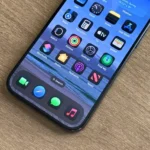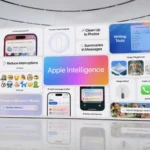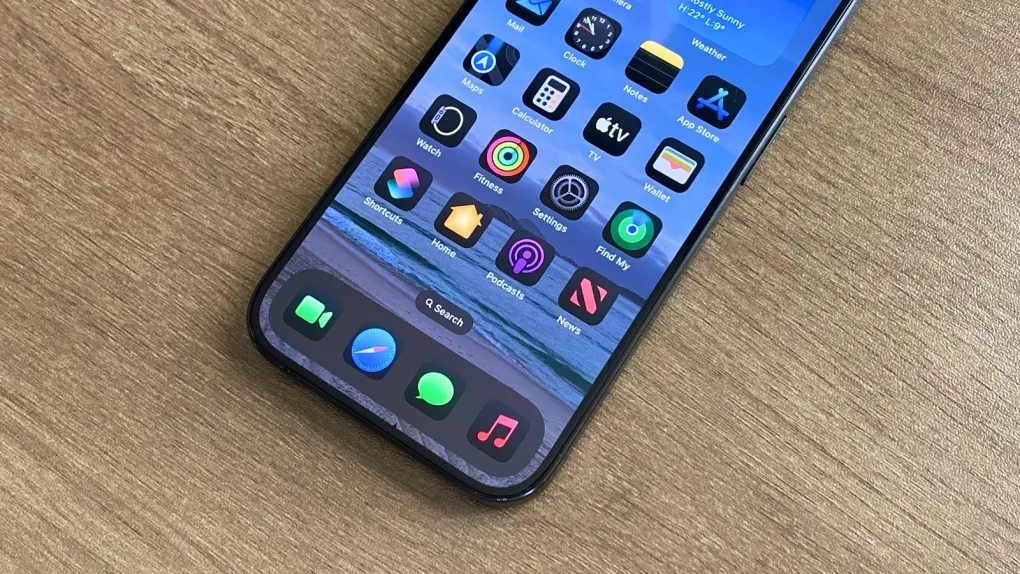

Step into the Future with Wearable Technology
Introduction to Wearable Technology
Wearable technology encompasses a range of electronic devices that can be worn on the body, extending beyond mere accessories to powerful gadgets that enhance and simplify our daily lives.
Initially, the concept of wearables began with rudimentary fitness trackers capable of monitoring basic health metrics like steps and heart rate. However, the evolution over the past decade has catapulted wearable devices into an era of sophistication and multifunctionality.
The journey of wearable technology dates back to the introduction of devices like the pedometer, but it gained significant momentum with the advent of the first digital watches in the 1980s. These early gadgets laid the groundwork for the modern smartwatches we know today.
By the 2000s, advancements in technology and miniaturization allowed for more complex functionalities. Smartwatches emerged as versatile tools that offered more than just timekeeping, including internet browsing, communication capabilities, and health monitoring.
The growth of wearable technology didn’t stop there.
Fitness trackers diversified, offering intricate metrics such as sleep patterns, blood oxygen levels, and stress indicators, transforming them into comprehensive health monitors.
The integration of augmented reality glasses further broadened the scope of wearables, blending the virtual and physical worlds to enhance user experiences in areas like gaming, training, and professional applications.
In the current landscape, wearable devices are not limited to a single category but span various applications, reflecting their broad impact. From healthcare wearables that can alert users to potential health issues to augmented reality glasses that can provide crucial data overlays in real-time, the diversity of these devices underscores their technological advancement and indispensability in modern life. This leap redefines what personal technology can achieve, making it an integral part of our everyday routines.
With these evolutions, wearable technology continues to grow, pushing the boundaries of innovation and setting the stage for even more revolutionary advancements shortly.
As we explore the multifaceted world of wearables, it becomes evident that these devices are not just accessories but key components of our digital ecosystem.
Fitness and Health Monitoring

Wearable technology has profoundly transformed the realm of fitness and health monitoring, offering unprecedented opportunities for individuals to track and manage their well-being. Among these wearable devices, fitness trackers, smartwatches, and health monitoring bands stand out for their diverse functionalities and user-centric designs.
These gadgets are equipped with an array of sensors that facilitate real-time data collection, providing users with insights into various aspects of their health.
Fitness trackers and smartwatches are quintessential tools for health enthusiasts and casual users alike.
Key features include heart rate monitoring, which helps individuals gauge their fitness levels and detect potential irregularities early. Sleep tracking capabilities allow users to assess sleep patterns and quality, offering valuable data that can improve sleep hygiene and overall restfulness. Step counting, a foundational feature, motivates users to maintain an active lifestyle by setting and achieving daily step goals. Additionally, calorie tracking functionality assists in monitoring dietary intake and energy expenditure, aligning physical activities with nutritional plans.
Health monitoring bands take these capabilities a step further by integrating advanced health metrics such as blood oxygen levels, electrocardiogram (ECG) readings, and even blood pressure monitoring.
Some devices can also detect and alert users about unusual health events, such as arrhythmias or sudden drops in blood oxygen levels, allowing for prompt medical intervention.
Wearable devices offer seamless integration with health apps, creating a comprehensive health ecosystem. Users can synchronize data across multiple platforms, enabling a holistic view of their health metrics.
This combined data can inform personalized health recommendations and interventions, facilitating more effective personal health management.
The availability of real-time data is a significant benefit for preventative care. By continuously monitoring vital signs and physical activities, users can quickly identify trends and anomalies, addressing potential health issues before they escalate.
This proactive approach enhances overall health and well-being, underscoring the transformative potential of wearable technology in fitness and health monitoring.
Smartwatches: Beyond Timekeeping
Smartwatches have significantly evolved beyond their initial function of simply telling time. Today, these advanced wearable devices serve as comprehensive personal assistants, catering to diverse consumer needs. Among the most notable features of modern smartwatches are notifications, which keep users informed about calls, messages, and app alerts without having to constantly check their smartphones. This seamless connectivity enhances productivity and convenience in our busy lives.
Another breakthrough functionality of smartwatches is GPS navigation. Whether trekking through uncertain terrain or navigating bustling city streets, smartwatches provide precise location data and turn-by-turn directions. This feature is particularly valuable for fitness enthusiasts who rely on accurate tracking during runs or cycling sessions.
Voice assistants, such as Apple’s Siri and Google Assistant, have further enriched the smartwatch experience. By enabling hands-free control, they allow users to set reminders, send messages, or search the web without lifting a finger. Additionally, smartwatches support mobile payments through platforms like Apple Pay and Google Wallet, offering a quick, secure, and hygienic way to transact without reaching for a wallet or phone.
The smartwatch market is diverse, with major brands consistently pushing the envelope. Apple Watch is renowned for its seamless integration with the Apple ecosystem and a host of health monitoring features, including heart rate tracking and ECG capabilities. Samsung’s Galaxy Watch offers robust compatibility with Android devices, long battery life, and a rotating bezel for intuitive navigation. Garmin smartwatches, on the other hand, are celebrated for their rugged build and advanced fitness metrics, appealing to outdoor enthusiasts and athletes.
Each model comes with unique attributes designed to address specific user preferences, making smartwatches an indispensable companion in our daily routines. As technology advances, we can anticipate even more innovations in the realm of wearable technology, further blurring the lines between communication, health, and lifestyle management.
Augmented Reality Glasses
Augmented Reality (AR) glasses represent a significant advancement in wearable technology, blending the digital world seamlessly with the physical environment.
By overlaying computer-generated imagery onto the user’s view, these glasses enhance real-world experiences through a digital lens. The underlying technology involves a combination of sensors, cameras, and complex algorithms to create real-time interactions between the user and their surroundings.
Current iterations of AR glasses, such as Microsoft’s HoloLens or the Magic Leap One, showcase diverse potential applications. Microsoft’s HoloLens, for instance, is utilized in sectors ranging from industrial design to healthcare.
Magic Leap One, on the other hand, focuses heavily on entertainment and interactive media experiences. Prominent projects under development, like Google’s rumored AR hardware, hint at a competitive future landscape for these innovative wearable devices.
The versatility of AR glasses is evident in their wide range of applications. In navigation, these wearables provide real-time directions and information overlays about local landmarks, enhancing both travel efficiency and tourism experiences. In the realm of education, AR glasses offer immersive learning environments where students can explore 3D models and simulations, making subjects such as science and history more engaging.
Remote assistance applications allow technicians and field workers to receive live support and overlayed instructions, increasing productivity and reducing error rates.
In gaming, AR glasses take user engagement to new heights by merging virtual elements with physical surroundings, offering an enriched interactive experience.
This infusion of augmented reality into gaming fosters a new level of immersion and interactivity. The convergence of the digital and physical worlds facilitated by AR glasses thus harbors the potential to revolutionize everyday interactions, altering how users perceive and interact with their environment.
As the technology continues to evolve, the impact of AR glasses is likely to grow, fostering greater integration of digital information into our daily lives and paving the way for innovative applications across various sectors.
This growing synergy between our physical and digital worlds promises to redefine the capabilities and boundaries of wearable devices.
Wearable Technology in the Workplace
Wearable technology is revolutionizing workplace environments by enhancing productivity, safety, and connectivity across diverse industries. From smartwatches and fitness trackers to augmented reality glasses, these cutting-edge devices are becoming indispensable tools for modern professionals.
One significant application of wearable technology is hands-free communication.
Devices such as smartwatches enable professionals to receive notifications, make calls, and send messages without interrupting their workflow.
This seamless form of communication is particularly valuable in industries where quick information exchange and multitasking are essential, such as healthcare, logistics, and customer service.
Additionally, employee health monitors, another example of wearable devices,
play a crucial role in promoting workplace safety and well-being. These devices track vital signs, activity levels, and even stress indicators.
By analyzing this data, employers can proactively address potential health concerns, reducing absenteeism and enhancing overall productivity. For instance, manufacturing companies have implemented such monitors to mitigate the risks of fatigue-related accidents, ensuring a safer working environment.
Moreover, augmented reality (AR) glasses are transforming remote assistance and training. These innovative wearables provide real-time visual guidance and interactive tutorials, significantly improving the efficiency of on-the-job training and problem-solving.
Technicians in the automotive and aerospace sectors, for example, benefit from detailed AR overlays that guide them through complex repair procedures, thereby decreasing errors and downtime.
Case studies and statistics further corroborate the positive impact of wearable technology in the workplace. A report by ABI Research highlighted that companies incorporating wearables saw a 15% increase in productivity and a 10% reduction in workplace incidents.
Another study from Accenture revealed that AR-based training programs led to a 30% improvement in skill retention compared to traditional methods.
As wearable devices continue to evolve, their potential to optimize workplace dynamics becomes more apparent.
By embracing these tools, businesses can not only enhance their operational efficiency but also foster a healthier and safer work environment.
Challenges and Ethical Considerations
Wearable technology, encompassing devices like smartwatches, fitness trackers, and augmented reality glasses, introduces a myriad of challenges and ethical implications that merit thorough examination.
While these devices promise substantial improvements in personal health, productivity, and convenience, they also pose significant concerns, particularly regarding data privacy and security.
With wearable devices constantly collecting sensitive health data, the risk of unauthorized access or data breaches is a pressing issue. Ensuring robust cybersecurity measures and data encryption is critical in safeguarding user information.
Another predominant concern is the potential for surveillance.
Wearable devices often feature built-in GPS tracking and connection to cloud services, raising the potential for misuse by corporations or unauthorized third parties. This highlights the need for stringent regulatory frameworks to protect consumer rights and ensure transparency in how data is collected, stored, and utilized. Establishing clear guidelines and protocols for data sharing can help mitigate these risks.
The mental health effects of continuous connectivity enabled by wearable technology also warrant consideration.
Constant notifications and alerts from smartwatches and fitness trackers can contribute to increased stress and anxiety, undermining the initial intent of promoting well-being.
Finding a balance between utilizing wearables for their beneficial purposes and minimizing their potential to become intrusive is crucial.
Furthermore, regulation must be adapted to keep pace with rapid technological advancements.
This extends beyond just privacy and security, touching on issues like the environmental impact of producing and disposing of wearable devices and ensuring equitable access to these technologies.
Legislative bodies, manufacturers, and users must collaborate to develop best practices for ethical usage and data protection.
Ultimately, navigating the ethical landscape of wearable technology requires a multifaceted approach.
Stakeholders must remain vigilant about potential pitfalls while fostering innovation that respects and protects user rights.
Through proactive measures and a commitment to ethical responsibility, the benefits of these advanced technologies can be fully realized without compromising individual freedoms and privacy.
Future Trends and Innovations
As we look towards the future, wearable technology is poised for remarkable evolution, ushering in a new era of interconnected, intelligent devices. Central to these advancements are next-generation smartwatches and fitness trackers, which are anticipated to feature an even deeper integration with health metrics.
Continuous monitoring of blood glucose levels, hydration, and even early detection of illness via sophisticated algorithms will redefine how individuals manage their well-being.
These advancements will transform wearables from novelty gadgets into essential health management tools.
Moreover, augmented reality glasses are expected to significantly evolve, integrating more seamlessly into daily life.
Future iterations of these devices will likely boast enhanced visual clarity, longer battery lives, and more intuitive user interfaces. This will further blend the digital and physical worlds, making activities such as navigation, professional training, and gaming more immersive than ever before.
The application of augmented reality in education and workplace training is another exciting frontier, with the potential to revolutionize learning and productivity.
The rise of wearables is also closely linked with the development of advanced materials and flexible electronics. Innovations such as ultra-thin sensors that can be embedded in clothing and bio-compatible materials for more comfortable long-term use are on the horizon.
These wearable devices will be less intrusive and offer superior performance, making them more attractive for daily use.
Insights from industry experts highlight wearables’ expanding role in the broader Internet of Things (IoT) ecosystem. Neal Osterling, a leading figure in wearable tech research, notes, “The integration of wearables with smart home systems and other IoT devices will provide a cohesive and streamlined user experience.
” This interconnected future is expected to deliver unprecedented convenience and efficiency in managing personal and home environments.
Overall, the trajectory of wearable technology indicates a future where these devices do more than track activities; they will predict health issues, enhance learning and productivity, and seamlessly integrate with our increasingly digital world.
The fusion of advanced AI, new material sciences, and powerful computing will likely yield wearable devices that not only enhance human capabilities but also transform societal norms.
As research and development continue to push boundaries, the coming years promise to unlock the full potential of wearable technology.
Embracing Wearable Technology in Your Life
Incorporating wearable technology into daily routines can greatly enhance personal efficiency and health monitoring. To begin, it’s essential to select the right devices that align with your specific needs.
For instance, fitness enthusiasts might opt for fitness trackers or smartwatches that offer comprehensive health metrics such as heart rate, step count, and sleep patterns.
On the other hand, professionals seeking productivity tools may find augmented reality glasses advantageous for on-the-go connectivity and hands-free operation.
Setting up these devices is often straightforward.
Most smartwatches and fitness trackers sync with smartphones via dedicated apps, providing an interface for customization and data interpretation.
It’s advisable to spend some time exploring the device’s features, ensuring you maximize its potential. For seamless integration, it is important to calibrate the device to your specific metrics, such as entering accurate height, weight, and activity levels into the setup app.
Maximizing the benefits involves habitual usage and consistent monitoring. Wearable devices often come with reminders and alerts that enhance their utility.
For example, a fitness tracker might alert you to move after prolonged periods of inactivity or notify you of irregular heart rates, encouraging a more proactive approach to health.
Additionally, tracking trends over time can provide insightful data that fosters informed decisions regarding lifestyle adjustments.
Staying updated with the latest in wearable technology is also crucial.
Regularly checking for firmware updates ensures your device runs smoothly and stays secure against potential vulnerabilities. Subscribing to updates from manufacturers or tech blogs can keep you informed about new devices and features that may enhance your wearable tech experience.
Success stories abound, illustrating the significant benefits of wearable technology.
Take, for instance, John, a marathon runner who credits his smartwatch for monitoring his vitals during training, leading to improved performance and quicker recovery times.
Similarly, Sarah, a busy executive, utilizes her augmented reality glasses to manage her tasks efficiently without missing important updates.
By carefully selecting, setting up, and regularly using wearable devices, you can seamlessly integrate them into your life, harnessing their full potential to enhance various aspects of your daily routine.
Here are some reliable sources you can reference for the topic “Step into the Future with Wearable Technology”:
- Wired – The Future of Wearable Technology: What’s Next?
- Harvard Business Review – Wearables for the Future of Healthcare
- TechCrunch – The Wearable Tech Revolution: A Glimpse into the Future
- Forbes – How Wearable Technology Will Transform Our Lives
- The Verge – Wearable Tech’s Evolution: From Fitness Trackers to Smart Clothing
These links should provide valuable insights and credible information for your article.
By TechTaker










Post Comment